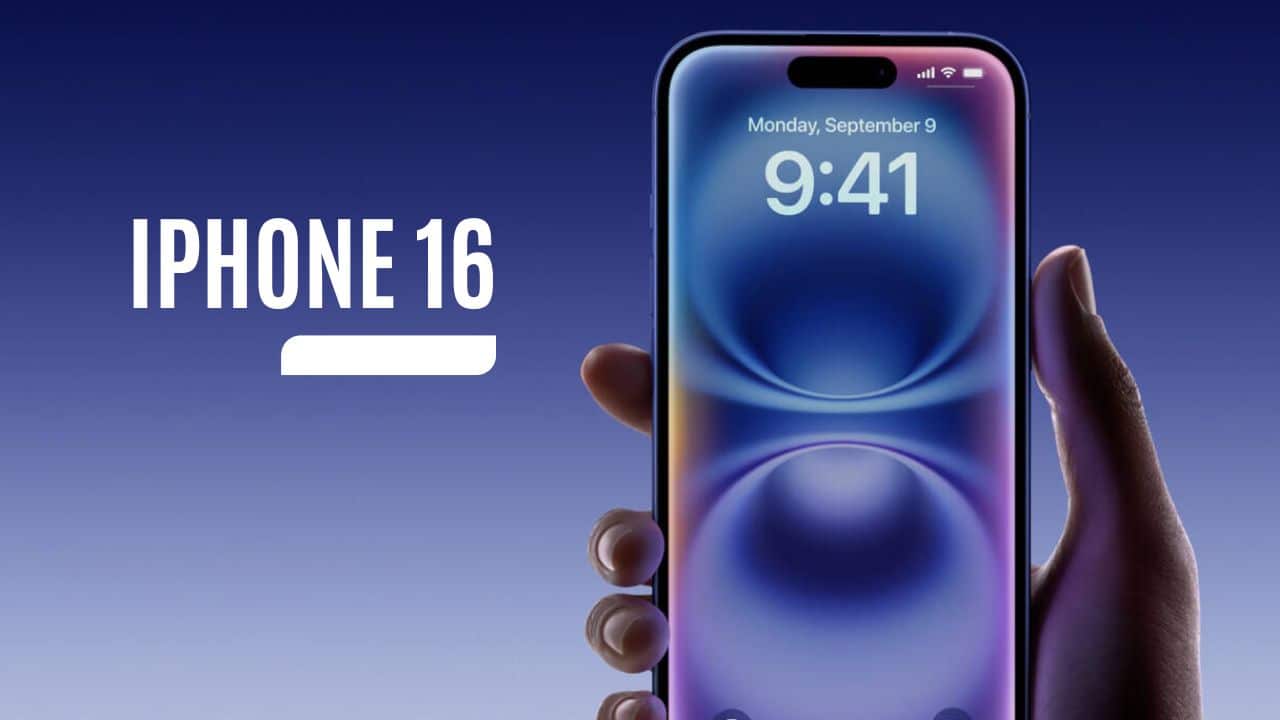Apple, one of the world’s leading tech giants, has been facing increasing pressure as its iPhone sales have stagnated in recent months. On Monday, the company revealed its newest offering—the iPhone 16, which features a unique external camera button. The unveiling came at Apple’s “Glowtime” event, where the company showcased not only the new iPhone but also upgrades to its other popular products. The new smartphone, with its AI-driven features, marks a major step in Apple’s efforts to reignite customer interest and boost sales.
A Look at iPhone 16’s AI Capabilities
At first glance, the iPhone 16’s external camera button might appear as a simple addition, but it is an indicator of the many underlying changes that Apple has made to this device. The external button is just one clue to the enhancements aimed at making the phone smarter and more responsive through the use of cutting-edge artificial intelligence (AI). According to Apple, the iPhone 16 is designed to harness the latest advancements in AI technology, setting it apart from its predecessors and offering users a more seamless, intelligent experience.
Apple’s CEO, Tim Cook, highlighted that these AI upgrades would “push the boundaries of what a smartphone can do.” However, this effort to position the iPhone 16 as a breakthrough device is happening in a competitive landscape. Other tech brands, such as Google and Samsung, have already integrated AI-powered tools into their devices, making Apple’s late entry into the AI race a critical one. With these enhancements, Apple hopes to retain its loyal customer base while also attracting new buyers who are keen on the latest technology.
Stock Price Reaction and Market Competition
Despite the excitement surrounding the new iPhone, Apple’s stock price took a hit during the “Glowtime” event. As the company revealed its newest product lineup, its shares fell and eventually ended the day flat. This stock market reaction underscores the challenges Apple faces, even as a $3 trillion company, in maintaining its leadership in the highly competitive tech industry. Investors and analysts alike have raised concerns about Apple’s ability to stay ahead in the rapidly evolving AI sector.
The iPhone, which remains Apple’s flagship product and accounts for nearly half of the company’s total sales, has seen a decline in its growth. According to Apple’s financial reports, iPhone sales slipped by 1% over the nine months ending on June 29, 2024, compared to the same period a year earlier. With its new AI-powered iPhone 16, Apple aims to reverse this trend and drive a new wave of upgrades from customers.
Apple Intelligence: The Next Step in AI Integration
One of the most significant aspects of the iPhone 16 is its integration with Apple’s newly developed “Apple Intelligence” tools. First introduced in June, these AI tools are designed to enhance the smartphone experience by offering users more creative, intuitive features. Among the most notable tools is an AI-powered system that helps users write and create custom emojis, adding a personal touch to their communications.
In addition, Apple is incorporating OpenAI’s popular chatbot, ChatGPT, directly into Siri. This integration will allow Siri to provide more advanced assistance for user queries and text generation requests. By leveraging the power of ChatGPT, Siri will be able to respond with greater accuracy and nuance, improving the overall user experience.
Apple’s strategic focus on AI marks a significant shift in how the company approaches smartphone innovation. While other tech companies have already embraced generative AI for photo editing, translation, and web browsing, Apple is betting that its proprietary AI tools will set the iPhone 16 apart from its competitors.
Enhancements Across the Product Lineup
In addition to the iPhone 16, Apple also announced major updates to its Apple Watch and AirPods products. These updates include new AI-driven features that aim to make the devices even more user-friendly. For instance, the new AirPods will now automatically reduce the volume when the wearer starts an in-person conversation. This AI-powered feature is designed to make it easier for users to switch between listening to media and engaging with people around them.
Another exciting update involves the AirPods Pro, which will be equipped with advanced hearing aid functionality. Apple claims that the Pro version of its AirPods will function as a “clinical grade” personal hearing aid for individuals with mild to moderate hearing loss. This feature is expected to receive regulatory approval soon, and it will be available in over 100 countries, including major markets such as the US, Germany, and Japan, by autumn 2024.
This hearing aid feature is a notable step forward in Apple’s efforts to make its devices more inclusive and accessible. Previously, Apple had introduced a feature allowing users to pair hearing aids with their iPhones and other devices, but the new update transforms AirPods into a more sophisticated tool for hearing assistance. This move aligns with Apple’s broader strategy of integrating health-related features into its products, positioning the company as a leader in the wearable tech and health-tech industries.
Mixed Reactions and Market Analysis
While the new iPhone 16 and its features have been generally well-received, not everyone is convinced that the latest upgrades will be enough to drive a significant increase in sales. Ben Wood, chief analyst at market research firm CCS Insight, expressed some skepticism about the external camera button. He suggested that many people might dismiss it as a “glorified shutter button.” However, Wood acknowledged that the iPhone 16’s AI-powered features, including visual search capabilities, could be a game-changer for Apple’s customers.
Wood added that Apple’s positioning of the iPhone 16 as a “future-proof” device could help win over existing customers who are looking to upgrade their phones. With the Apple Intelligence tools expected to roll out over the next few years, buyers may see the iPhone 16 as a long-term investment, especially as AI becomes more integrated into everyday smartphone use.
Apple’s Position in the AI Race
Despite the innovative AI features in the iPhone 16, Apple is entering the AI race later than some of its competitors. Brands like Samsung and Google have already made significant strides in incorporating generative AI into their smartphones. These companies have also introduced more novel designs, such as folding and tri-folding phones, which have captured consumer attention.
For instance, on the same day that Apple unveiled its iPhone 16, Huawei reportedly received over three million pre-orders for its new tri-fold phone, the Mate XT. This level of demand highlights the stiff competition Apple faces in the global smartphone market, particularly from companies that have embraced both AI and innovative hardware design.
A Critical Moment for Apple
Gartner analyst Annette Zimmermann pointed out that Apple’s decision to roll out its AI-powered features later than its rivals puts added pressure on the company to deliver a flawless experience. According to Zimmermann, it is “critical” for Apple to ensure that these features work seamlessly, as any misstep could damage the company’s reputation or lead to a loss in sales.
Zimmermann also warned that launching AI features before they are fully ready could result in negative feedback from customers, which would be a major setback for Apple. Given the competitive landscape, the stakes are high for the company as it seeks to regain its leadership position in the AI and smartphone markets.
Pricing and Availability
Apple has announced that sales of the new iPhone 16 range will begin in September, with prices starting at $799 for the base model. However, while customers will be able to purchase the new iPhones next month, the much-anticipated Apple Intelligence features won’t be available until later in the year. The AI tools will first be rolled out in the US in October, with other countries, including the UK, following in December.
The delay in the availability of these AI features may impact initial sales, as customers may choose to wait until the full capabilities of the phone are accessible. However, Apple is confident that its loyal fan base will be eager to experience the new technology as soon as it becomes available.
Protest at the “Glowtime” Event
While Apple showcased its new products at the “Glowtime” event, protestors gathered across the street in a designated free speech area. The protestors were calling on Apple to step up its efforts to protect children from harmful content on its App Store. The protest featured a life-sized blow-up figure designed to resemble Apple CEO Tim Cook.
This protest reflects the growing scrutiny that major tech companies face regarding content moderation and online safety. Apple, in particular, has been under fire for not doing enough to prevent harmful or inappropriate content from being accessible on its platform. The company has previously taken steps to improve its content moderation policies, but critics argue that more needs to be done to ensure the safety of young users.
The Future of iPhone 16 and Apple’s AI Strategy
Apple’s introduction of the iPhone 16 marks a pivotal moment for the company as it seeks to regain its momentum in the smartphone market. With AI playing an increasingly important role in smartphone functionality, Apple’s ability to deliver on its promises will be key to its success. The integration of AI into the iPhone 16 and other products, such as the Apple Watch and AirPods, signals the company’s commitment to staying at the forefront of technological innovation.
Whether the iPhone 16 will be enough to reverse the recent decline in iPhone sales remains to be seen. However, with its new AI tools and advanced features, Apple is betting that it can win over both loyal customers and new buyers in the years to come. The iPhone 16, along with the company’s broader AI strategy, could determine Apple’s future in the rapidly changing world of technology.






































